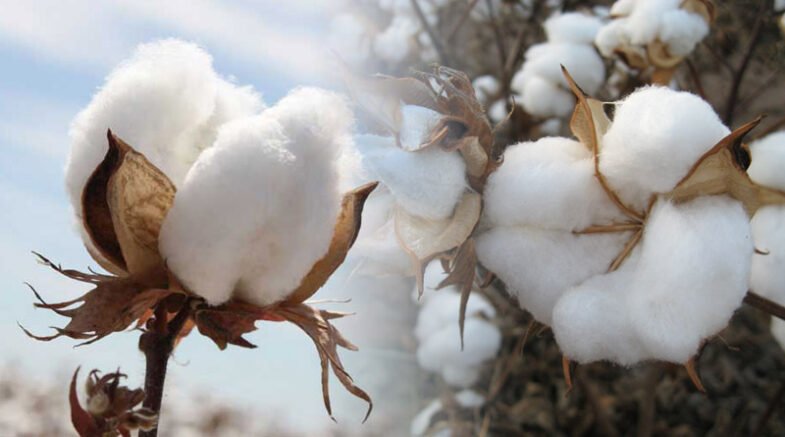Cotton, a soft and versatile material that has been used for centuries to create clothes, bedding, and much more.
 Cotton, a soft and versatile material that has been used for centuries to create clothes, bedding, and much more. But did you know that cotton also has a rich history of medicinal use? From treating fevers and headaches to aiding in wound healing, the health benefits of cotton are not to be overlooked.
Cotton, a soft and versatile material that has been used for centuries to create clothes, bedding, and much more. But did you know that cotton also has a rich history of medicinal use? From treating fevers and headaches to aiding in wound healing, the health benefits of cotton are not to be overlooked.
In this blog post, we’ll explore the fascinating history of cotton and its many nutritional and health benefits. We’ll also debunk some common myths about this plant and discuss why it’s so important for Pakistan’s economy. So sit back, relax, and let’s dive into the world of cotton!
Success stories about cotton
Cotton has a long and fascinating history with many success stories to tell. One such story is that of Eli Whitney, who invented the cotton gin in 1793. This revolutionary device made it much easier and faster to separate cotton fibers from their seeds greatly increasing productivity and profits for farmers.
Another success story comes from India, where cotton has been grown for thousands of years. Indian cotton was highly prized by European traders due to its exceptional quality and softness. Today, India remains one of the largest producers of cotton in the world.
In more recent times, there have been technological advancements that have further improved the efficiency of cotton production. For example, precision agriculture techniques allow farmers to use data about soil moisture levels and nutrient content to optimize crop yields.
Despite these successes, however, there are also challenges facing the global cotton industry today. From climate change to labor issues, there are many factors that can impact crop yields and profitability for farmers. Nonetheless, those involved in growing or working with this remarkable plant continue to strive towards sustainability and innovation into the future
Medicinal properties of cotton
Cotton, as we know it, is not only a useful material for textiles but also has medicinal properties. The cotton plant contains compounds that have been used in traditional medicine for centuries. These compounds are found in parts of the plant such as roots, leaves and seeds.
One of the most well-known medicinal benefits of cotton is its ability to alleviate pain and inflammation. Cottonseed oil has been used topically to soothe skin irritation caused by eczema or psoriasis. It can also be taken orally to reduce joint pain associated with conditions like rheumatoid arthritis.
Cottonseed oil also contains antioxidants which help protect cells from damage caused by free radicals. This property makes it beneficial for heart health as it helps prevent oxidative stress on blood vessels.
Another compound found in cotton fibers is gossypol which has shown promising results in treating cancer cells. Gossypol acts by inhibiting cell growth and inducing apoptosis (programmed cell death) in cancer cells while leaving normal cells unharmed.
These medicinal properties make cotton a valuable resource not just for textiles but also for modern medicine research and development.
Myths about cotton
There are many myths surrounding cotton that have been circulating for years. One common myth is that cotton clothing cannot be worn during hot weather, as it will make you feel even hotter. However, this is not true – in fact, cotton clothing can actually help to keep you cool by allowing air to circulate around your skin.
Another myth about cotton is that it requires a lot of water to grow, and therefore contributes to water shortages in some areas. While it’s true that growing any crop requires some amount of water, the actual amount needed for cotton farming is often overstated. Additionally, there are sustainable irrigation methods available which can help minimize the impact on local water resources.
Some people also believe that all cotton products contain harmful chemicals and pesticides. While it’s certainly important to choose organic or sustainably-grown cotton whenever possible, not all non-organic products will necessarily harm your health or the environment.
There’s a misconception that synthetic fabrics are always more durable than natural fibers like cotton. In reality, high-quality cotton products can last just as long (if not longer) than their synthetic counterparts if they’re cared for properly. While there may be some misconceptions out there about this versatile material, don’t let these myths deter you from enjoying all the benefits of comfortable and sustainable 100% pure Cotton!
Reason of low growth rate of cotton in Pakistan
Pakistan has been one of the world’s major cotton producers since its independence. However, in recent years, there has been a decline in cotton production due to various reasons. One reason is the lack of research and development in the industry, which results in poor quality seeds and outdated farming methods.
Another factor affecting the growth rate of cotton is climate change. Pakistan has seen an increase in extreme weather patterns such as droughts and floods that have adversely affected crop yields. Inadequate irrigation facilities also add to this problem.
Additionally, pests and diseases can cause significant damage to crops if not managed properly. Farmers often use pesticides indiscriminately without following proper guidelines, leading to resistance from pests.
Farmers face difficulties accessing credit for inputs like fertilizers or machinery. This causes them to rely on informal sources of credit with high-interest rates that reduce their profit margins significantly.
Multiple factors contribute to low growth rates of cotton production in Pakistan: lack of research and development; climate change; pest infestation; inadequate irrigation infrastructure; limited access to credit for inputs like fertilizers or machinery etcetera.
